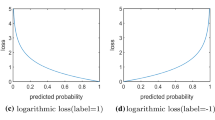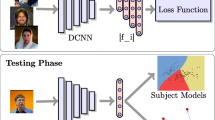Abstract
Significant progress in the development of new loss functions has led to the improvement in the discriminative power of learned face features. Generally, loss function is used to find the difference between the correct output and the predicted output of face features from a convolutional neural network model. Greater differences between the two outputs lead to higher loss function which indicates poor performance. On the other hand, for two outputs that are identical or near similarity, the loss function is zero or low respectively implying better performance. In other words, the model is trained iteratively until the loss function or error is minimized. As a result, loss function encourages the minimization of intra-class variations and the maximization of inter-class differences. Note that the loss function is only implemented during the training phase and is discarded in the testing phase. In this paper, different types of loss functions for face recognition are reviewed. These loss functions are categorized into four groups, namely Metric Learning, Classification Loss, Mining-based Loss and Balancing-based Loss.
Access this chapter
Tax calculation will be finalised at checkout
Purchases are for personal use only
Similar content being viewed by others
References
Guo, G., Zhang, N.: A survey on deep learning based face recognition. Comput. Vis. Image Underst. 189, 102805 (2019)
Liu, W., Wen, Y., Yu, Z., Yang, M.: Large-margin softmax loss for convolutional neural networks. In: International Conference on Machine Learning, vol. 2, no. 3, p. 7 (2016)
Lu, J., Hu, J., Zhou, J.: Deep metric learning for visual understanding: an overview of recent advances. IEEE Sig. Process. Mag. 34(65), 76–84 (2017)
Sun, Y., Chen, Y., Wang, X., Tang, X.: Deep Learning face representation by joint identification-verification. In: Advances in Neural Information Processing Systems, pp. 1988–1996 (2014)
Schroff, F., Kalenichenko, D., Philbin, J.: FaceNet: a unified embedding for face recognition and clustering. In: Proceedings of the IEEE Conference on Computer Vision and Pattern Recognition, pp. 815–823 (2015)
Wen, Y., Zhang, K., Li, Z., Qiao, Y.: A discriminative feature learning approach for deep face recognition. In: Leibe, B., Matas, J., Sebe, N., Welling, M. (eds.) ECCV 2016. LNCS, vol. 9911, pp. 499–515. Springer, Cham (2016). https://doi.org/10.1007/978-3-319-46478-7_31
Deng, J., Zhou, Y., Zafeiriou, S.: Marginal loss for deep face recognition. In: Proceedings of the IEEE Conference on Computer Vision and Pattern Recognition Workshops, pp. 60–68 (2017)
Liu, W., Wen, Y., Yu, Z., Li, M., Raj, B., Song, L.: SphereFace: deep hypersphere embedding for face recognition. In: Proceedings of the IEEE Conference on Computer Vision and Pattern Recognition, pp. 212–220 (2017)
Wang, H., et al.: CosFace: large margin cosine loss for deep face recognition. In: Proceedings of the IEEE Conference on Computer Vision and Pattern Recognition, pp. 5265–5274 (2018)
Deng, J., Guo, J., Xue, N., Zafeiriou, S.: ArcFace: additive angular margin loss for deep face recognition. In: Proceedings of the IEEE Conference on Computer Vision and Pattern Recognition, pp. 4690–4699 (2019)
Huang, Y., et al.: CurricularFace: adaptive curriculum learning loss for deep face recognition. In: Proceedings of the IEEE Conference on Computer Vision and Pattern Recognition, pp. 5901–5910 (2020)
Zeng, D., Shi, H., Du, H., Wang, J., Lei, Z., Mei, T.: NPCFace: a negative-positive cooperation supervision for training large-scale face recognition. arXiv preprint arXiv:2007.10172 (2020)
Wang, X., Zhang, S., Wang, S., Fu, T., Shi, H. and Mei, T.: Mis-classified vector guided Softmax loss for face recognition. Association for the Advancement of Artificial Intelligence (AAAI), New York, USA (2020)
Zhang, X., Fang, Z., Wen, Y., Li, Z. and Qiao, Y.: Range loss for deep face recognition with long-tailed training data. In: Proceedings of the IEEE International Conference on Computer Vision, pp. 5409–5418 (2017)
Liu, H., Zhu, X., Lei, Z., Li, S.Z.: AdaptiveFace: adaptive margin and sampling for face recognition. In: Proceedings of the IEEE Conference on Computer Vision and Pattern Recognition, pp. 11947–11956 (2019)
Wei, X., Wang, H., Scotney, B., Wan, H.: Minimum margin loss for deep face recognition. Pattern Recogn. 97, 107012 (2020)
Acknowledgements
This work was supported by the Universiti Sains Malaysia, Research University, under Grant 1001/PELECT/8014052.
Author information
Authors and Affiliations
Corresponding author
Editor information
Editors and Affiliations
Rights and permissions
Copyright information
© 2022 The Author(s), under exclusive license to Springer Nature Singapore Pte Ltd.
About this paper
Cite this paper
Hoo, S.C., Olagoke, A.S., Ibrahim, H. (2022). Survey on Loss Function for Face Recognition. In: Mahyuddin, N.M., Mat Noor, N.R., Mat Sakim, H.A. (eds) Proceedings of the 11th International Conference on Robotics, Vision, Signal Processing and Power Applications. Lecture Notes in Electrical Engineering, vol 829. Springer, Singapore. https://doi.org/10.1007/978-981-16-8129-5_74
Download citation
DOI: https://doi.org/10.1007/978-981-16-8129-5_74
Published:
Publisher Name: Springer, Singapore
Print ISBN: 978-981-16-8128-8
Online ISBN: 978-981-16-8129-5
eBook Packages: Intelligent Technologies and RoboticsIntelligent Technologies and Robotics (R0)




